Designed for a motorized warfare
The Type 95 can trace its roots as far back as 1933. Then, the Type 89 I-Go, only able to achieve infantry pace, was duly put on a replacement schedule. The Type 89 was (relatively) heavy, well armored, with a moderately efficient low-velocity 57 mm (2.24 in) gun, but utterly slow. The general Army Staff put forth a demand for a lightweight fast tank, which would not only be used for infantry support, but also to spearhead motorized attacks, at truck speed. The Army Technical Bureau studied models from abroad, as a Japanese delegation attended trials of Christie tanks and Carden-Loyd tankettes, as well as French cavalry models.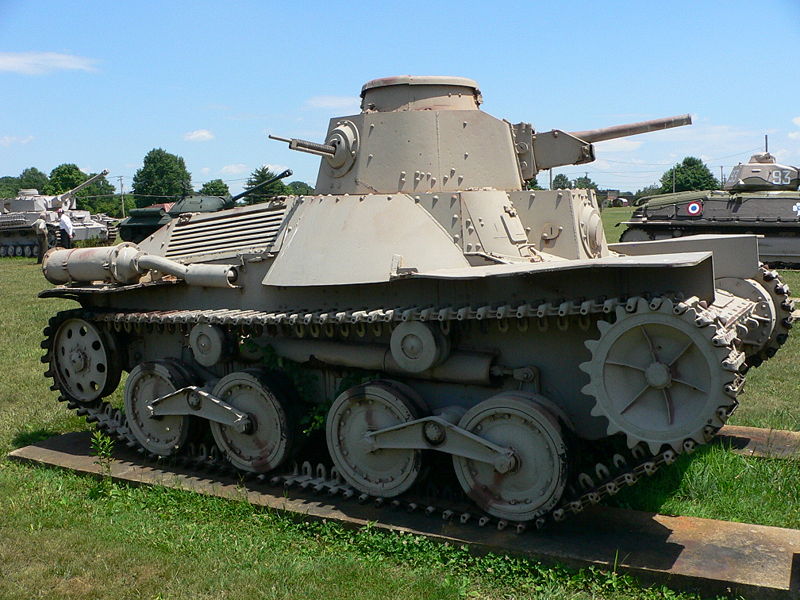
A Type 95 Ha-Go, seen from the right side, preserved at the US Army ordnance museum
However, the model designed in 1934 used a custom, simple suspension, with distinctive large bell cranks, which represented a large part of the hull length. The cavalry demanded a fast machine, the infantry a better protected one, but the former won in the end. The plans were ready in 1935, and Mitsubishi Heavy Industries was quickly ordered to produce a first batch of machines, but only 100 were built by 1939. After that, orders were also placed to Sagami Arsenal, Hitachi Industries, Niigata Tekkosho, Kobe Seikosho, and Kokura Arsenal. Together, they produced 1250 more machines until 1942. Mitsubishi also went on to produce 850 more vehicles.
Description
The Type 95 Ha-Go, also known as Ke-Go, was a rather small machine of seven tons. The crew consisted of three men, the commander, which served also the main 37 mm (1.46 in) gun, a machine-gunner, and the driver. The commander, who had multiple tasks, was overloaded, a fate similar to that of his peers in many other early tanks. The main gun was a medium-velocity Type 98 37 mm (1.46 in), 46 caliber long, Hotchkiss-inspired gun. It was reliable, had a muzzle velocity of 675 to 700 m/s, and was capable of penetrating 25 mm (0.98 in) of armor at 500 m, with its armor-piercing rounds.4 view technical drawing
Most of its shells were standard explosive rounds, as these tanks were mostly used in an anti-infantry role. Armament was completed by two Type 97 machine guns, one in the turret rear, in a five o'clock position, and the other in the front hull. The very simple suspension system proved easy to maintain, although a single well-placed hit could disable the vehicle. Early trials also demonstrated that this system had a tendency to pitch badly, and the off-road capabilities were, at least at the beginning, severely limited even on moderately rough terrains. Later on, after several fixes, the system still gave the crew a rough ride, rendering aiming impossible on the move. The two bogies supported two wheels each, and tracks were driven through the front sprockets. An interesting feature of the Ha-Go was located at the back of the vehicle. There was a fake bolt head. This bolt was actually a button, like a door bell. This is a relatively recent discovery. It is believed that this was used by troops behind the tank to warn the crew of their presence so they are not reversed over. If this is true, the Ha-Go is one of the first tanks to have such a feature.
Wartime production
Despite all the manufacturers involved, only 2300 such vehicles were built. It was, by far, the most widely available and used tank in the Japanese military from 1939 to the end of the war. However, it was rendered obsolete after 1943 by the M3A3, M5 Stuart, and the medium tank M4 Sherman.Early versions differed from wartime production vehicles by their 36 caliber Type 94 main gun, with lower muzzle velocity, and thus less penetration power. Also, secondary armament comprised two 6.5 mm (0.25 in) Type 91 machine guns. The engine was the old Mitsubishi 110 bhp model, already produced for the former Type 89 I-Go. 100 of these tanks were produced, all sent to China and, later, a few were given to the Manchukuo puppet state.
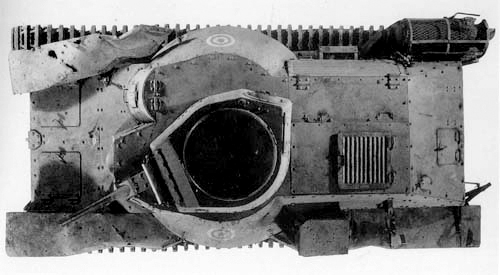
IJA identification photo
Variants
The only true main derivative was the Ke-Nu. It was an upgunned version, with main armament of the Chi-Ha (one 57 mm/2.24 in gun), produced in 1944. Other variants included the Type 3 Ke-Ri, Type 4 Ho-To, and Type 5 Ho-Ru SPG prototypes. The latter was a tank-hunter adaptation. However, the Ha-Go was scheduled in 1942 for replacement with the Type 3 Ke-Ri.Type 2 Ka-Mi
In 1943, a chassis was used for trials of an amphibious model, intended for the Special Navy Landing Forces. This led to the Ka-Mi conversion, equipped with two detachable pontoons. Produced from 1943 to 1944, they fought in the Marianas, Marshall and Guam islands in 1944. Only 182 were ever completed.
Type 4 Ke-Nu
The Type 4 Ke-Nu was an unfortunate sub-product of the development of the Type 97 Chi-Ha. When it was apparent that the latter's main low velocity 57 mm (2.24 in) gun was only appropriate against infantry, a new high velocity 47 mm (1.85 in) was developed and adopted by an upgraded version of the model, which became the Type 97-kai Shinhoto. Thereafter, many unused regular Chi-Ha turrets were put on Ha-Go hulls, giving birth to the Type 4 Ke-Nu. This added to its firepower, but condemned the model to close-range defense or infantry support. Plus, the Ke-Nu was somewhat heavier and slower. Only 100 were built in 1944. Most were stationed at Okinawa and Kyushu, and a few fought in Manchukuo and Korea in 1945.
Prototypes
Type 3 Ke-Ri
This model was scheduled to replace the Ha-Go in 1942, when work on the design started. It was decided, due to cost and ease of production reasons, to keep the entire chassis of the Ha-Go, while mounting a brand new turret with a high velocity 47 mm (1.85 in) gun.
Type 4 Ho-To
The Ho-To was a SPG mounting the Type 38 120 mm (4.72 in) howitzer. Despite its low velocity, the gun could fire armor-piercing HEAT shells.
Type 5 Ho-Ru
The Ho-Ru was a light tank destroyer. It had an arrangement vaguely similar to the German Jagdpanzer 38(t), with a sloped casemate and 45 mm (1.77 in) high velocity gun, which would have been able to defeat US light tanks. The suspension was also revised, with a new track with 350 mm wide links. The wheel guide pins and the drive sprocket were both rearranged.
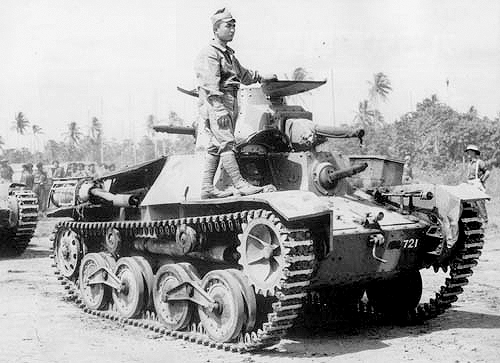
Ke-Go, date unknown
Wartime actions
The Type 95 was first introduced in China in 1937. Despite the few built by that time, it proved more than capable to deal with the underequipped Chinese army, along with the Type 89. Some of them were sent to the puppet Manchukuo state army. 50 were sent to the Thai army in 1940, fighting in Burma in the campaign in the Shan States. The first serious test came in June 1939, during the Nomonhan "border incident", were a massive force comprising Type 89s, Type 95s, and some Type 94 tankettes fought against Russian BT-5 and BT-7 fast tanks. The Russian tanks, despite their thin protection, were almost twice as heavy and equipped with a high velocity 45 mm (1.77 in) gun. They were able to cripple the IJN tanks at 1000 meter ranges and more, while the Japanese were only capable of answering under 600 meters.
The first Japanese-US tank battles occurred during the desperate defense of Bataan (Philippines) in December 1941, against M3 Stuarts. The latter proved to have superior armor, but their crews had less experience and training, and suffered losses. In Malaya and Burma, also in December 1941, the Ha-Go was well-employed in jungle warfare, surging where they were not expected. Being light and rugged enough, they performed well in many tropical environments during the war. The Ha-Gos were also engaged almost everywhere in the Pacific, from Guadalcanal to Okinawa. In 1944, they were clearly outgunned and under-protected against bazookas, antitank rifles and even cal.50 (12.7 mm) rounds.
In August 1945, during the Manchurian Offensive, the Russians were equipped with the T-34/85s, IS-1s, and many self-propelled guns, which far outgunned and outranged the Ha-Go, still the mainstay of the IJN forces there.
Export
Thailand
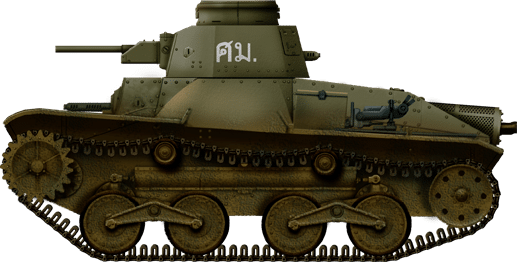
The Thai Ha-Go, the Type 83.
The Ha-Go was one of the few Japanese tanks of World War Two to be exported to other countries. The Royal Thai Army bought around 50 of the vehicles in 1940, renaming them Type 83 after the Buddhist year 2483. The tanks arrived just in time for Imperial Japan to press-gang Thailand into the service of the Axis. The Tanks were deployed in the Thai action in the Shan state of British Burma. The Tanks remained in service until 1954, and 1 of the tanks remains on the Royal Thai Army’s inventory.
French-Indochina
The Tanks were also used post war in French-Indochina, modern day Vietnam, by the occupying French military. They made a series of small upgrades to the vehicle which consisted of applique armor welded to the turret cheeks and lower glacis.
Prototypes
Type 3 Ke-RiThis model was scheduled to replace the Ha-Go in 1942, when work on the design started. It was decided, due to cost and ease of production reasons, to keep the entire chassis of the Ha-Go, while mounting a brand new turret with a high velocity 47 mm (1.85 in) gun.
Type 4 Ho-To
The Ho-To was a SPG mounting the Type 38 120 mm (4.72 in) howitzer. Despite its low velocity, the gun could fire armor-piercing HEAT shells.
Type 5 Ho-Ru
The Ho-Ru was a light tank destroyer. It had an arrangement vaguely similar to the German Jagdpanzer 38(t), with a sloped casemate and 45 mm (1.77 in) high velocity gun, which would have been able to defeat US light tanks. The suspension was also revised, with a new track with 350 mm wide links. The wheel guide pins and the drive sprocket were both rearranged.

Ke-Go, date unknown
Wartime actions
The Type 95 was first introduced in China in 1937. Despite the few built by that time, it proved more than capable to deal with the underequipped Chinese army, along with the Type 89. Some of them were sent to the puppet Manchukuo state army. 50 were sent to the Thai army in 1940, fighting in Burma in the campaign in the Shan States. The first serious test came in June 1939, during the Nomonhan "border incident", were a massive force comprising Type 89s, Type 95s, and some Type 94 tankettes fought against Russian BT-5 and BT-7 fast tanks. The Russian tanks, despite their thin protection, were almost twice as heavy and equipped with a high velocity 45 mm (1.77 in) gun. They were able to cripple the IJN tanks at 1000 meter ranges and more, while the Japanese were only capable of answering under 600 meters.The first Japanese-US tank battles occurred during the desperate defense of Bataan (Philippines) in December 1941, against M3 Stuarts. The latter proved to have superior armor, but their crews had less experience and training, and suffered losses. In Malaya and Burma, also in December 1941, the Ha-Go was well-employed in jungle warfare, surging where they were not expected. Being light and rugged enough, they performed well in many tropical environments during the war. The Ha-Gos were also engaged almost everywhere in the Pacific, from Guadalcanal to Okinawa. In 1944, they were clearly outgunned and under-protected against bazookas, antitank rifles and even cal.50 (12.7 mm) rounds.
In August 1945, during the Manchurian Offensive, the Russians were equipped with the T-34/85s, IS-1s, and many self-propelled guns, which far outgunned and outranged the Ha-Go, still the mainstay of the IJN forces there.
Export
Thailand

The Thai Ha-Go, the Type 83.
The Ha-Go was one of the few Japanese tanks of World War Two to be exported to other countries. The Royal Thai Army bought around 50 of the vehicles in 1940, renaming them Type 83 after the Buddhist year 2483. The tanks arrived just in time for Imperial Japan to press-gang Thailand into the service of the Axis. The Tanks were deployed in the Thai action in the Shan state of British Burma. The Tanks remained in service until 1954, and 1 of the tanks remains on the Royal Thai Army’s inventory.
French-Indochina
The Tanks were also used post war in French-Indochina, modern day Vietnam, by the occupying French military. They made a series of small upgrades to the vehicle which consisted of applique armor welded to the turret cheeks and lower glacis.Type 95 Ha-Go specifications | |
| Dimensions | 4.38 x 2.06 x 2.18 m (14.4 x 6.8 x 7.2 ft.in) |
| Total weight, battle ready | 7.4 tons (8.2 short tons) |
| Crew | 3 (driver, commander/gunner, machine-gunner) |
| Propulsion | Mitsubishi A6120VD 14.4 l, air-cooled diesel, 120 hp (90 kW)@1800 rpm |
| Suspension | Bell crank |
| Armement | Main: 37 mm (1.46 in) Type 94 AT gun - Secondary: 2 x Type 97 7.7 mm (0.3 in) machine guns |
| Armor | 6 to 16 mm (0.24-0.63 in) |
| Top speed | 45 km/h (28 mph) |
| Range (road/off road) | 250 km (400 mi) |
| Total production | 2300 |
Links, Resources and Further Reading
The Ha-Go on WikipediaA more exhaustive depiction on History of War
Osprey Publishing, New Vanguard #137: Japanese Tanks 1939-1945
Osprey Publishing, Elite #169: World War II Japanese Tank Tactics
Gallery
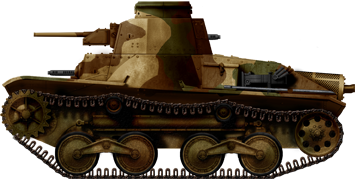
An early production Type 95 with the typical 1937 camouflage.
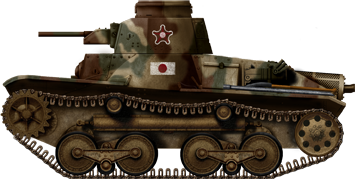
A Manchurian Ha-Go with the "Manchu" type suspension, 1940.
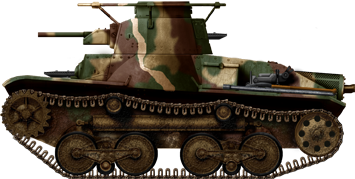
Ha-Go command tank with the "Manchu" suspension type, China, 1940.
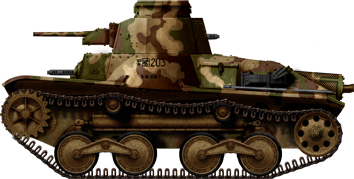
A Ha-Go from the Kwantung army, with a base three-tone camo and a brighter beige color later applied. Nomonhan (Battle of Khalkhin Gol), June 1939.
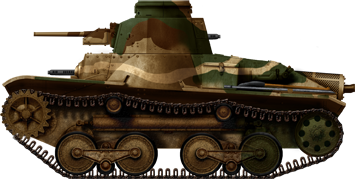 Another Ha-Go from the Kwantung army in 1939, with the "Manchu" type suspension. Notice the horizontal stripe.
Another Ha-Go from the Kwantung army in 1939, with the "Manchu" type suspension. Notice the horizontal stripe.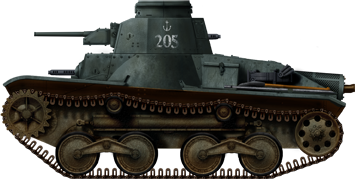
Typical Ha-Go from a navy unit, involved in the amphibious operations in the south-western Pacific, fall 1941/early 1942.
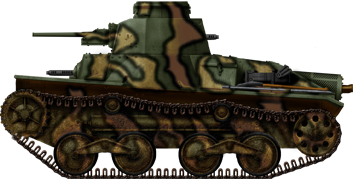
Type 95 Ha-Go during the Philippine campaign, January 1942.
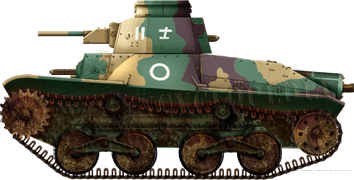
A Burma campaign Ha-Go, September 1944. This pattern of beige and blue-green was not unusual, as high contrast visual effects were sought for.
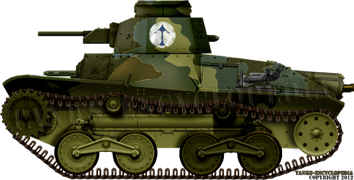
A Ha-Go during the Saipan campaign, 1944.
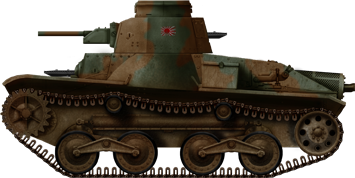
Type 95 Ha-Go, late-production version, Indonesia, 1943.
Variants & derivatives
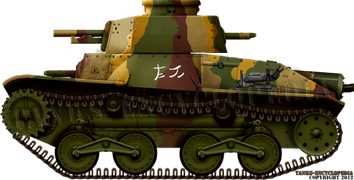
Type 4 Ke-Nu, an offspring reequipped with the early Type 97 Chi-Ha turret.
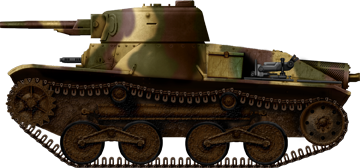
The Type 3 Ke-Ri, the designated replacement for the Ha-Go. It was basically the same chassis rearmed with a new turret housing a high velocity 45 mm (1.77 in) gun. Prototype on trials, Japan, fall 1944.
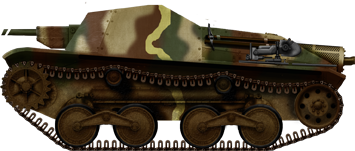
Type 5 Ho-Ru. This was a projected tank-hunter based on the Ha-Go, with the same 45 mm (1.77 in) high velocity standard gun developed for the Shinhoto Chi-Ha. It is unknown if one prototype was built or only a mockup.
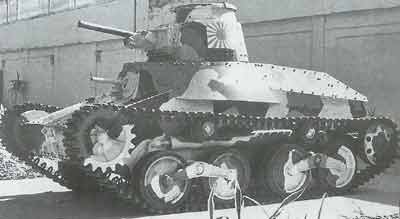
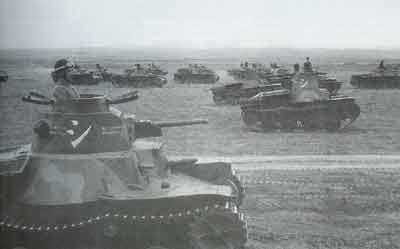
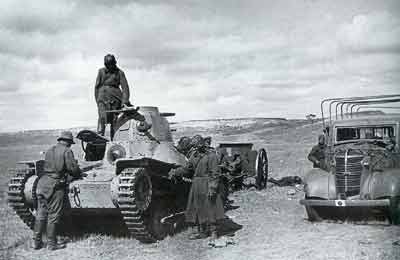
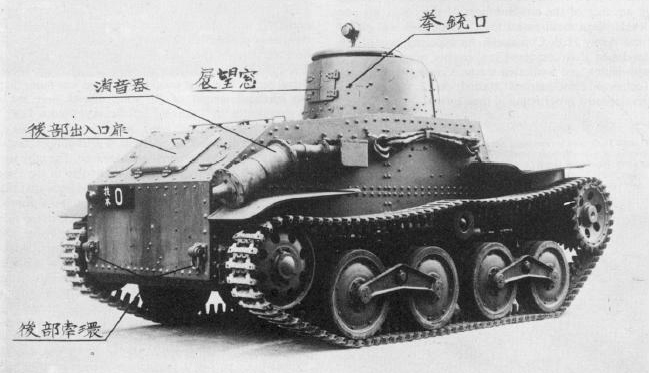
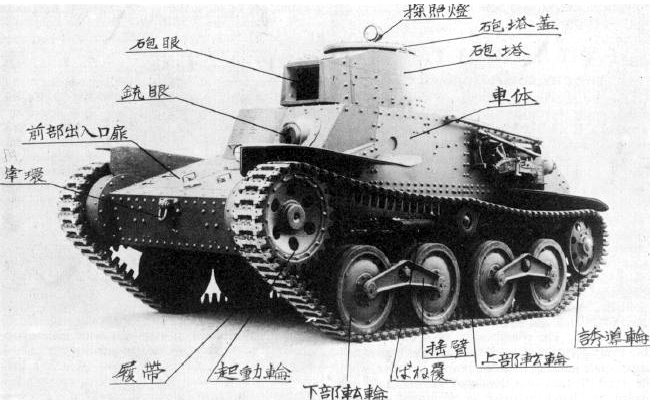
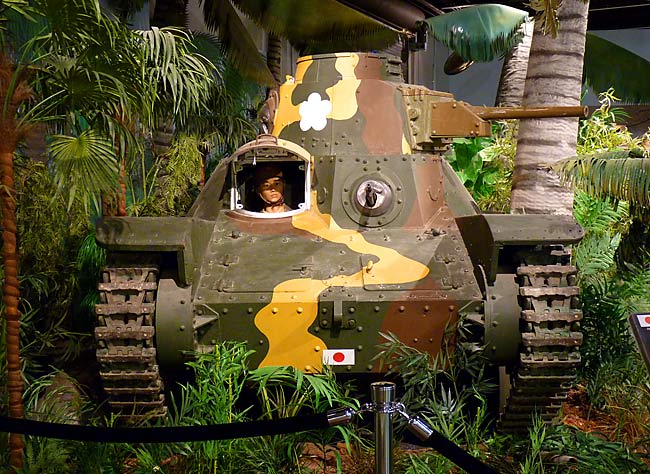
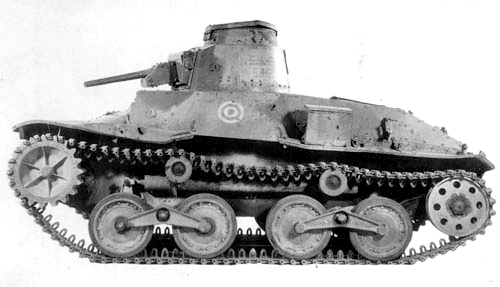
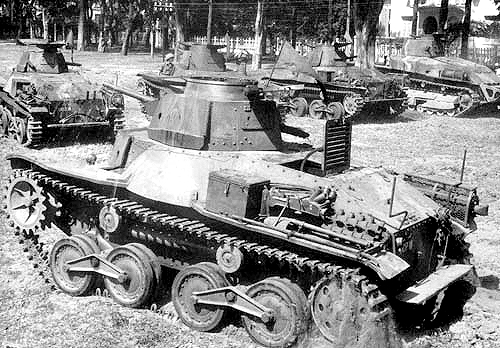
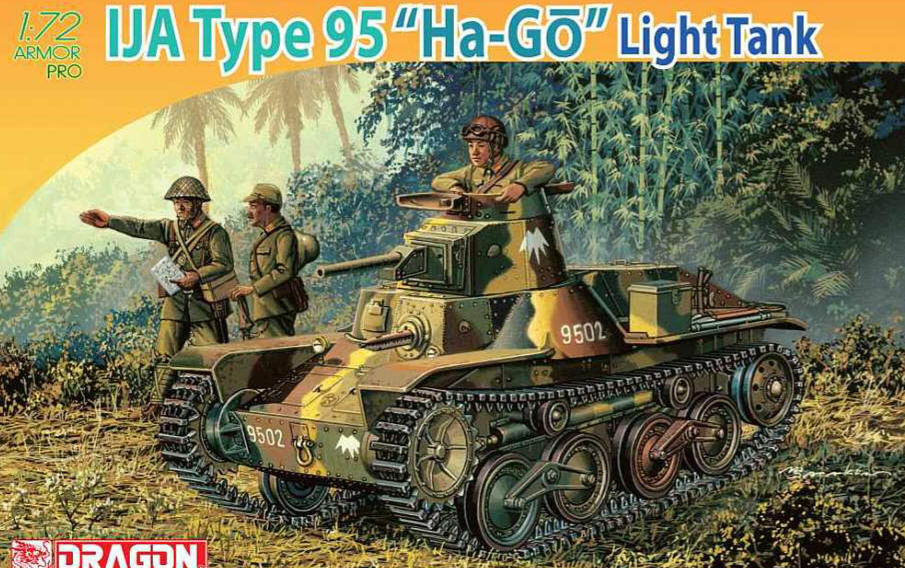
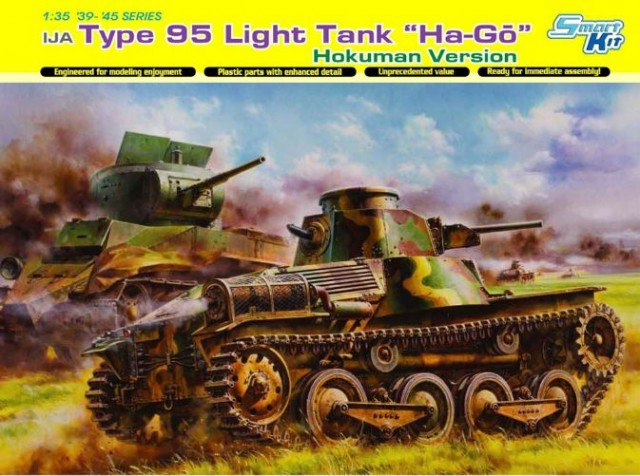
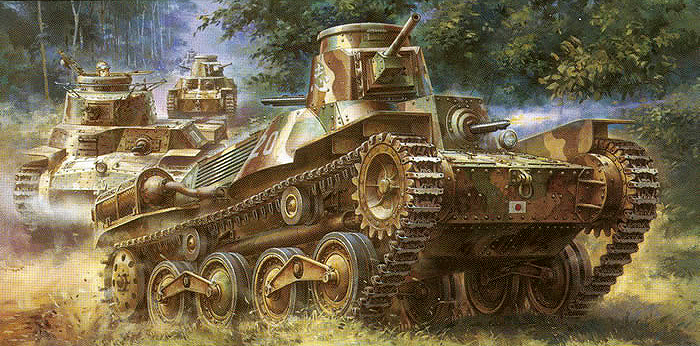
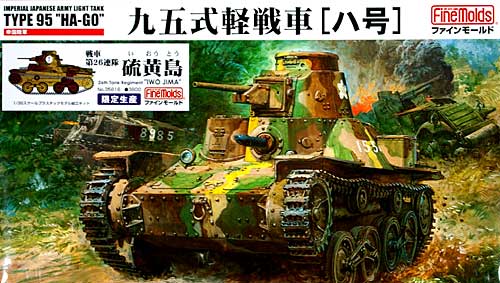

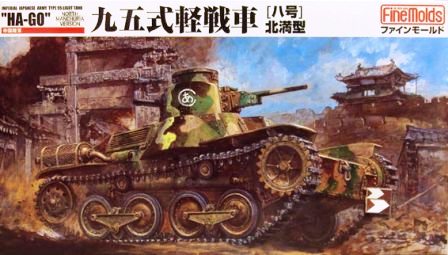
A WWII Us Army Ordnance training video on how to combat the Ha-Go

Get the Poster of the ww2 Imperial Japanese Army Tanks and support us !

WW2 Tanks




























WW2 tanks posters

All Tiger tanks liveries.

Panther liveries and variants

WW2 Armour - All tanks











Tanks aces and single tanks series

Find more there

Museums, Movies, Books & Games
The Tanks and Armor in pop culture
Tanks and armored vehicles in general are only really grasped when seen first person: The mass, the scale, it's all there. Explore also the way tanks were covered in the movie industry, in books and in video games.Movies:
Best tanks movie on warhistoryonline.com
On imdb.com
On bestsimilar.com/
miltours.com
liveabout.com/
watchmojo.com
Video Games:
pcgamesn.com
historyhit.com
levvvel.com
vg247.com/best-tank-games
mmobomb.com/
alienwarearena.com

